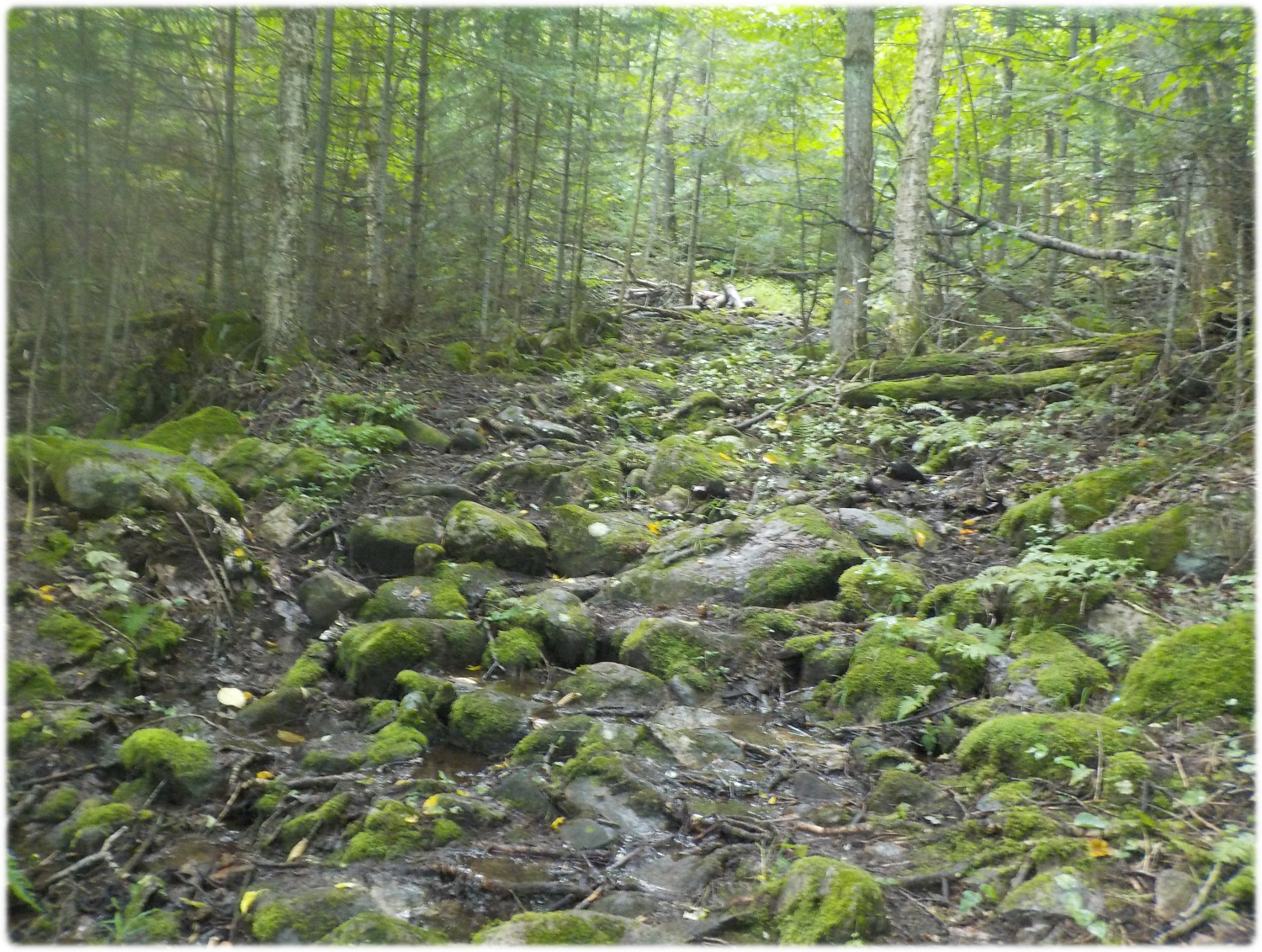Out Day
Happy to report that we survived the night without a bear visit. The biggest challenge was sleeping on the slope — I woke up at one point to realize that the lumpy thing under me was actually a child. I don't remember which one, and neither of them remember it, so it must not have been a big deal. I think that uphill portages on the previous day caused all of us to sleep soundly.
Our plan for "out day" was a low maintenance portage and then a straightforward paddle back to our car at Algonquin Outfitters. The portage would complete the loop portion of the trip. After that we would be paddling up Cedar lake, retracing the first part of our route from Day 1.
Getting Up
We ate a breakfast of oatmeal along with the rest of our apples. Rather than make another fire, I saved time by using the stove to boil the water. After our experience from the previous night, we thought that making a fire could have consumed most of the morning.
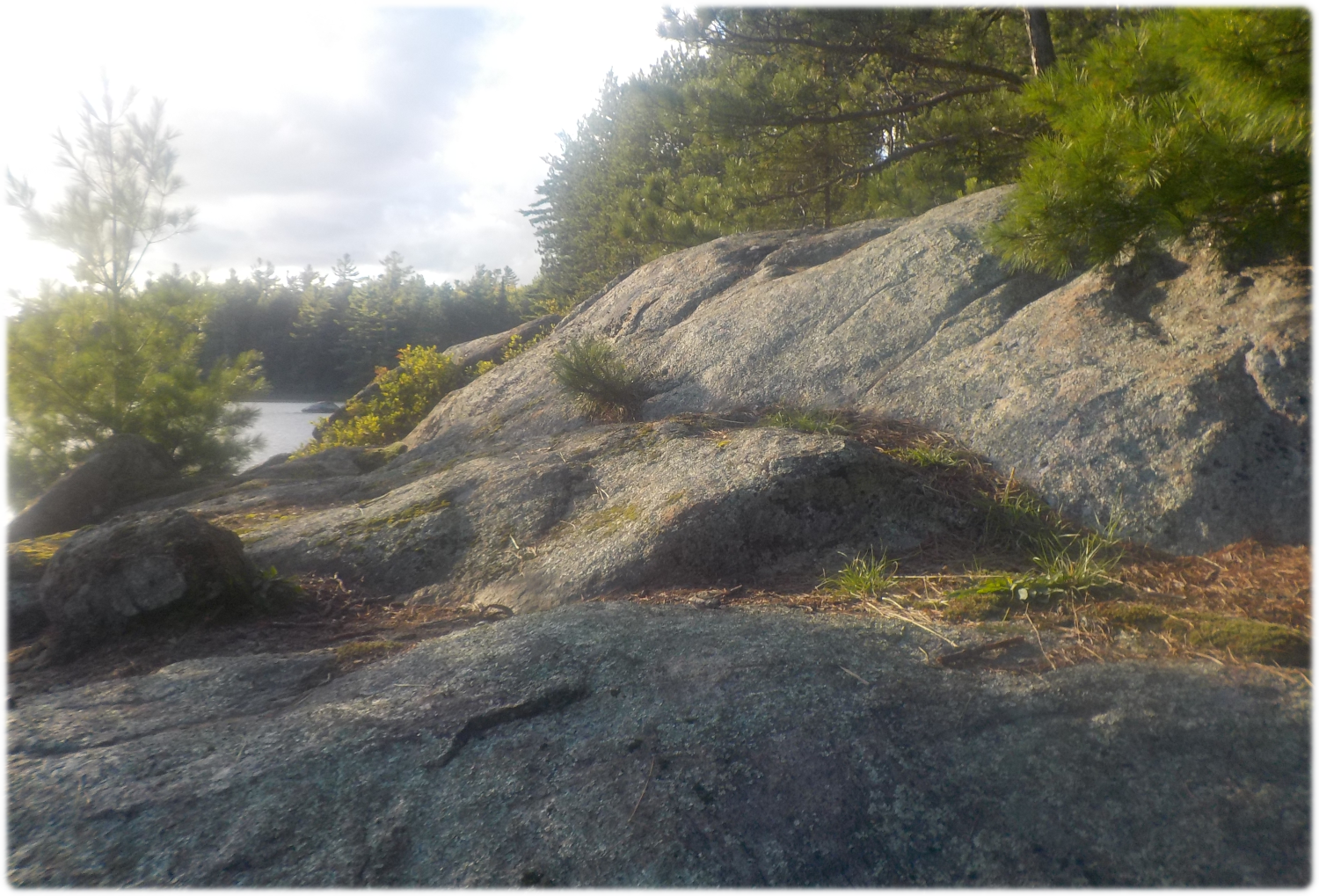
This was another shaded and cold site, the sun only showed up as we were leaving. It didn't seem to bother anyone — the kids had fun playing on the site's big front porch. The most common game that I heard at this site was "ninja-school" which was brand new. It seemed to involve following each other on tricky routes (with jumping, etc.) around the rock. They did a small amount of cliff climbing, but it was mostly just jumping between places on the lake facing side of the rock.
Packing
After eating breakfast, the kids went back to playing while I finished my coffee and got ready for the day. I prepared lunch, which was peanut butter wraps and the rest of our cucumber, cut into slices. Learning from previous days, I was sure to pack this in a container that was easy to reach.
This was the last of our food (except for a few extra pounds of snack), so even more of our gear could be moved to the food barrel. This made the kid's loads lighter and also took most of our things out of the broken gym bag.
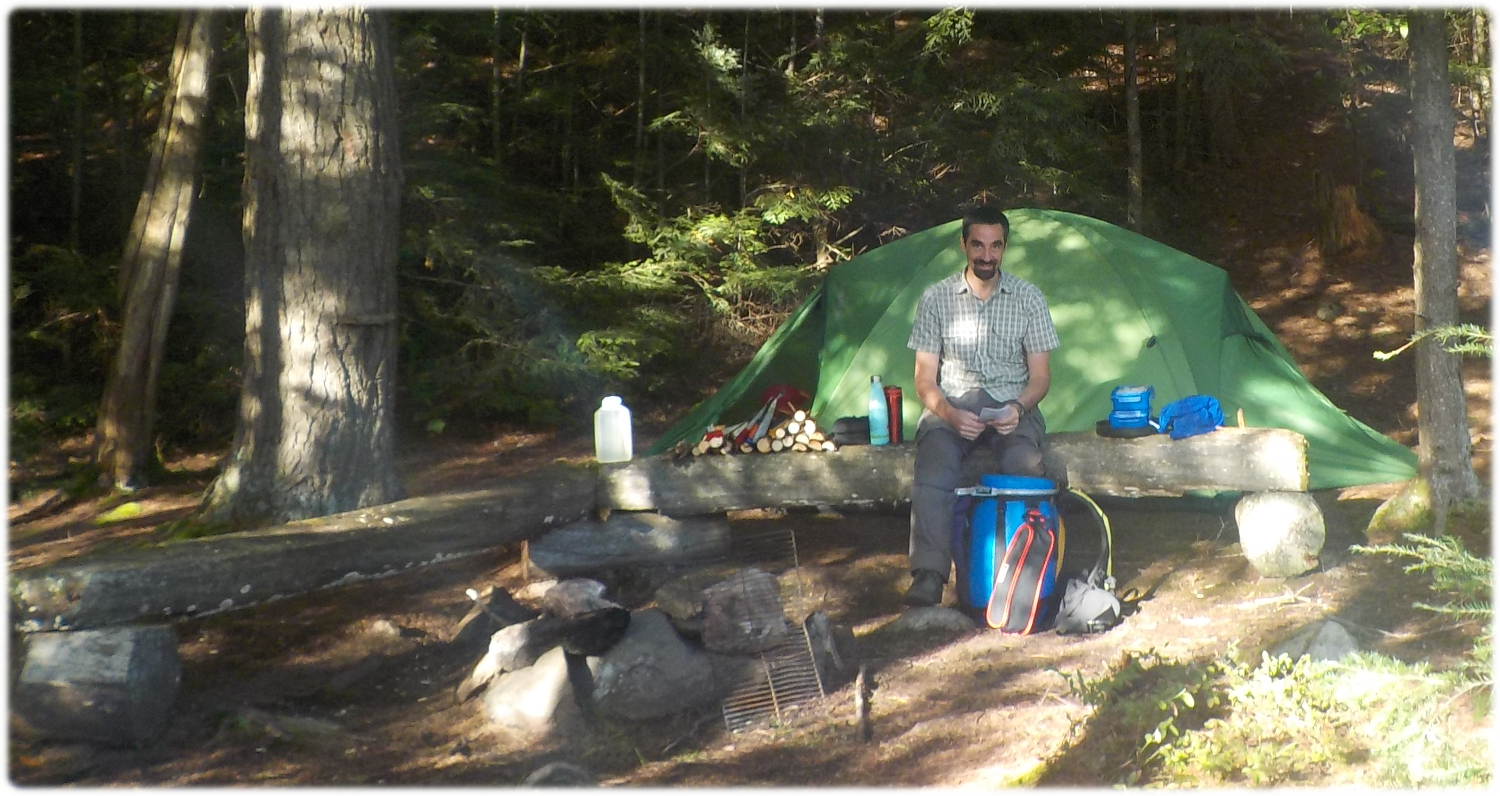
The Last Portage
With everything packed up, we had a last look around the site and then bushwhacked our gear to the trailhead. We found the canoe safe and sound and piled everything beside it. Once again, we were careful to keep things off to the side of the trail, even though we really didn't expect to see anyone.
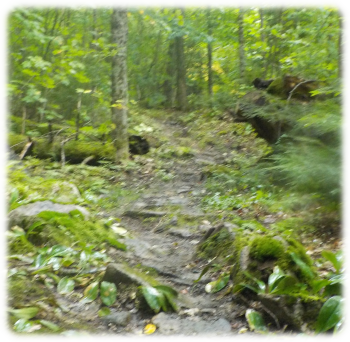
The portage was the same plan as the previous day, which is probably what we'll do on future trips too. Two trips for the kids and three for me — packs, canoe, then the rest of the packs. When the kids are older their second trips can be heavier and I might get down to two trips. I don't think we'll ever get to single carry, which is OK — going back for a second load gives a chance to enjoy the walk through the forest. It's sort of like golf, but you don't have to look for your ball. ☺
According to our Spot device, the elevation of Bug Lake is about 430m and Cedar Lake is about 305m. For comparison, Carl Wilson was measured at about 330m. So, we needed to descend a ladder with about 400 rungs, even more than we had climbed the previous day. Additionally, that day's trail was a shorter horizontal distance, so we were in for a steeper trek.
We knew about this before the trip, and even decided the direction of the loop for this reason. Doing this portage on the last day meant less food to carry and it also meant we could go downhill instead of up. As it turned out, the killer part of this trail is near the Cedar end, a stretch of about 300m that is a steep hill with a creek/water fall down the middle of the path. If we had been going the opposite direction then we would have confronted that at the start of the trail instead of near the end.
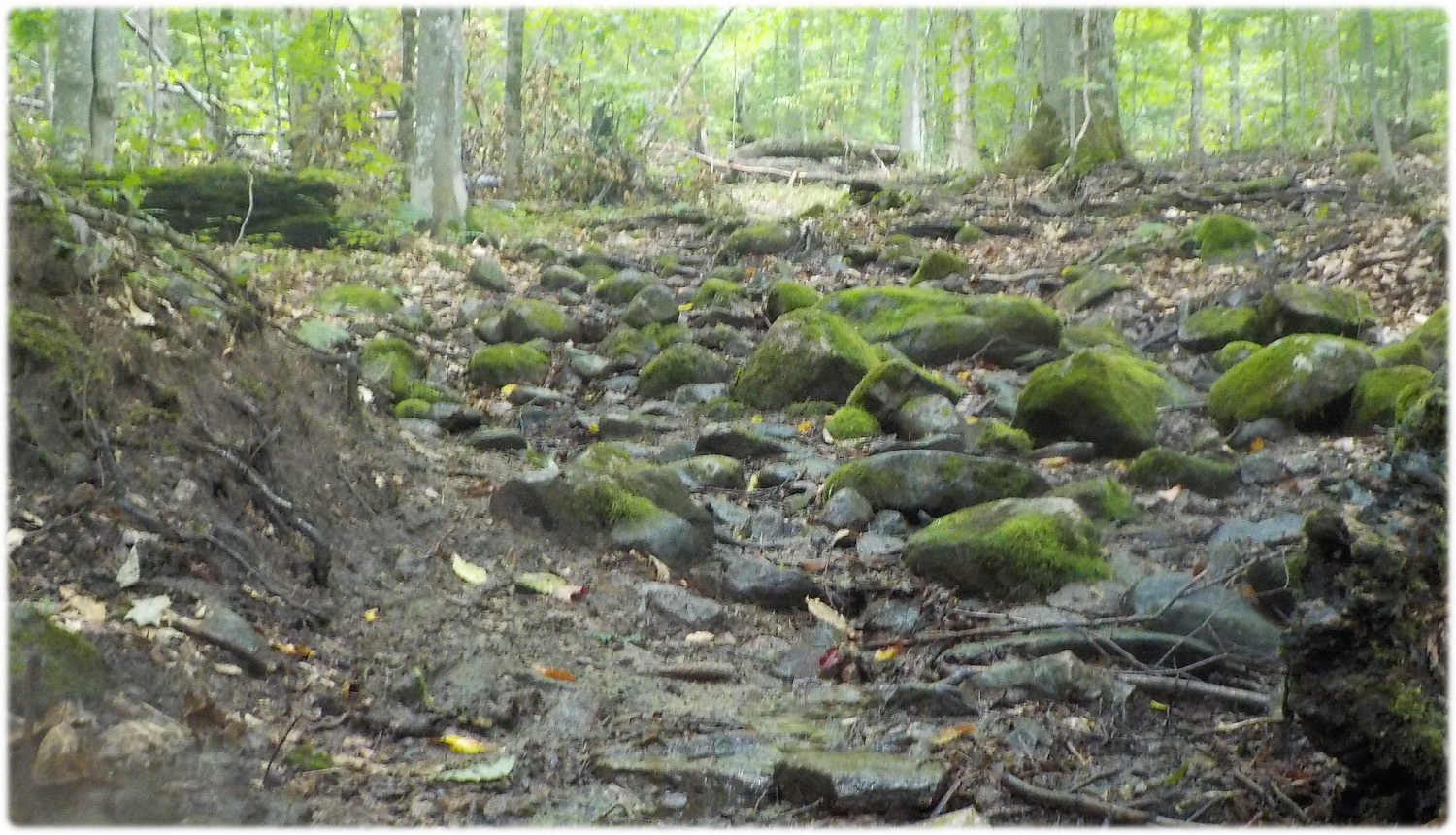
I wasn't able to get a photo to show the steepness of the trail. The moss on the rocks were very slippery — not great to walk upon, but really nice to look at.
Portage Conditions
When a tree falls in the forest and lands across a portage trail, people on YouTube call it a "blow down". Clearing blow downs is part of portage trail maintenance, since we were on a low maintenance trail, we expected to get to see some of these.
We were in luck, as we got to see a doozy, pretty close to the Bug Lake end. Laying across the trail it came up to a little over my waist, so I estimate the diameter of the trunk to be about 3 feet. It had been there long enough that other campers had created a bypass trail going around the stump end. I tried going over the trunk one time (without a bag), but found the bypass to be the easier way. This was the only blow down that we saw though — a little anti-climactic.
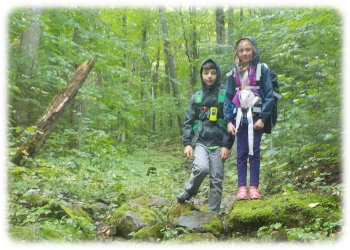
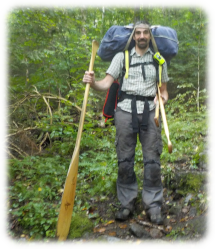
We took our first loads about halfway and then headed back for the second trip. I took the canoe and the kids took the rest of their things. Eventually we got back to where we had left the first loads and then decided to split up. The kids took a radio and continued on while I went back for the rest of our gear.
Our timing worked out fairly well, we both got back to the middle at about the same time. The kids picked up the rest their gear and I continued on with what I was carrying. When we got to the end they decided to stay there while I went back for the rest of the gear. I left the canoe for the final trip because I still wasn't sure how to get it down the steep slope that forms the second half of the portage.

Lunch
When I got back to the trailhead, we had our lunch and took a few minutes to rest. A light rain had started during the morning and we were all wearing rain gear. I headed back to get the canoe and they decided to join me for the walk.
Katherine in particular was a bit nervous to be alone because of some distant thunder. It sounded like the direction of Carl Wilson, but we didn't see the lightning so we couldn't judge the distance — it might have been further. Thinking ahead a bit, we realized that a storm from that direction would mean a tail wind for our paddle.
Canoe Head
The lunch break gave me time to think more about how to get the canoe down the steep slope and I was feeling better about my chances. I didn't have any new ideas though, just the simple plan to go slow and see what happened.
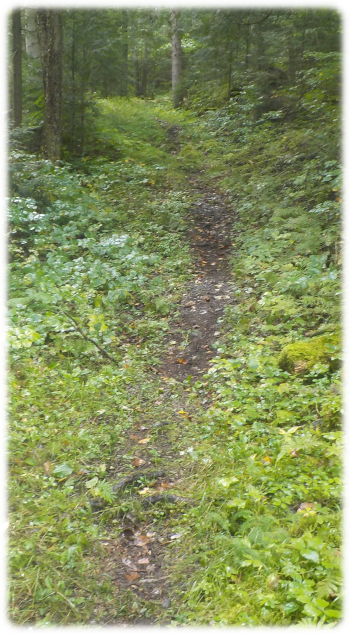
The only other bit of planning was to make sure the kids walked far enough behind in case I stumbled and the canoe fell. That turned out to be good planning, at one point my leg gave way and I had to ditch the canoe in a hurry. I wasn't injured, my foot just slipped on a rock and I went down to a knee. The canoe had a bit of a hard landing, but was no worse for the wear.
In general, I found carrying the canoe downhill easier than the rest of the portages. I was able to tilt it more forward, which stopped the feeling of the canoe sliding off my back. I had also stumbled on the idea of putting one hand on the yoke (right beside my shoulder) which pushed the canoe a bit to the front. Since then, I've noticed the same hold done by trippers on YouTube. I now consider this to be an official canoe carry hold, even though I've never heard it described as such.
We got to the trailhead and the skies cleared, so my canoe hat was no longer needed. This was a good thing, because that "hat" soon had all our bags in it and we were off by about 1:00pm. The land part of our trip was done, from here to the end would be all floating.
